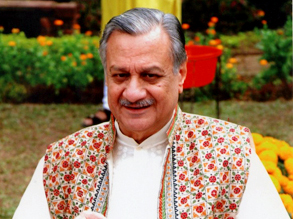
Pandit Vijay Kichlu and Subhra Guha gave a lecture and demonstration of Indian classical music at the Whitney Humanities Center on September 9. After being introduced by Sarah Weiss of the Yale Department of Music, Kichlu explained that the demonstration would focus on the North-Indian tradition rather than the South-Indian. A definite history of music has existed from about 1500 B.C., along with specific rhythms and tempos that have endured to this day. The Indian musical tradition is thousands of years old, but it continues to flourish. Kichlu went on to speak about the role of the guru, who is considered as a physical personification of the divine. Because the music is not always composed beforehand, training and hard work give practitioners the ability to play. The intention of the music is to evoke deep emotions in people. In this respect, the idea of raga is very important. Raga refers to the emotion or mood within the music.
Subhra Guha demonstrated the practical aspect of music-making by playing a large, wooden stringed instrument called the tanpura, and she was accompanied by Samar Saha on the tabla, a popular Indian percussion instrument. She showed the audience scales completely different from the Western “do, re, mi” and improvised her own riffs. A student from the audience gave her about eight notes to perform, and she formed a haunting, melancholy melody from them to show that patterns can be constructed from anything. Guha further demonstrated her capabilities by creating a song from a Hindi sentence that was given by another audience member.
Kichlu concluded the demonstration by reading passages about the essence of raga, beyond the scales, the patterns, and the nuances. Quoting a musicologist, he described the music as “a spark of life,” “a mood,” “a melody,” and “a personal statement.”
On September 10, the trio performed again to an audience that packed the McNeil Lecture Hall of the Yale Art Gallery. Sponsored by the Council on South Asia, Pandit Vijay Kichlu’s, Subhra Guha’s, and Samar Saha’s visit illuminated important aspects of Indian classical music as they shared their passions with the Yale community. The lectures and demonstrations gave the participants a greater understanding of the technical and practical aspects of music, as well as the intense training that the performers devote themselves to, while the concert heightened appreciation of this ancient art form.
